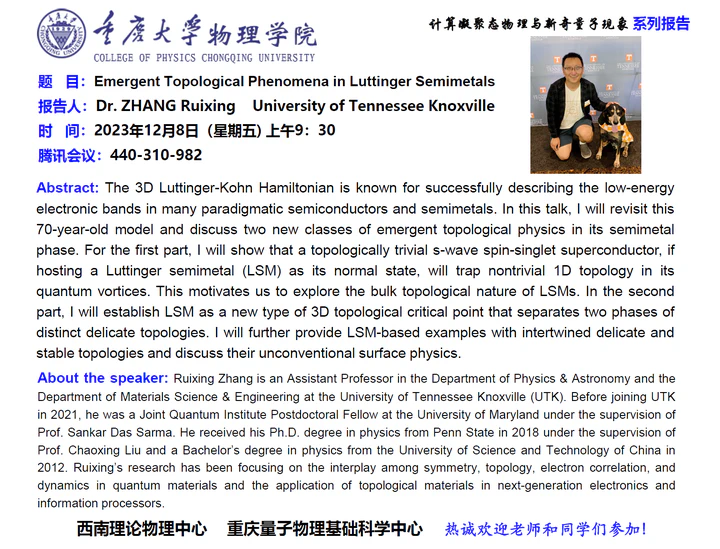Emergent Topological Phenomena in Luttinger Semimetals

Abstract
The 3D Luttinger-Kohn Hamiltonian is known for successfully describing the low-energy electronic bands in many paradigmatic semiconductors and semimetals. In this talk, I will revisit this 70-year-old model and discuss two new classes of emergent topological physics in its semimetal phase. For the first part, I will show that a topologically trivial s-wave spin-singlet superconductor, if hosting a Luttinger semimetal (LSM) as its normal state, will trap nontrivial 1D topology in its quantum vortices. This motivates us to explore the bulk topological nature of LSMs. In the second part, I will establish LSM as a new type of 3D topological critical point that separates two phases of distinct delicate topologies. I will further provide LSM-based examples with intertwined delicate and stable topologies and discuss their unconventional surface physics.
About the speaker
Ruixing Zhang is an Assistant Professor in the Department of Physics & Astronomy and the Department of Materials Science & Engineering at the University of Tennessee Knoxville (UTK). Before joining UTK in 2021, he was a Joint Quantum Institute Postdoctoral Fellow at the University of Maryland under the supervision of Prof. Sankar Das Sarma. He received his Ph.D. degree in physics from Penn State in 2018 under the supervision of Prof. Chaoxing Liu and a Bachelor’s degree in physics from the University of Science and Technology of China in 2012. Ruixing’s research has been focusing on the interplay among symmetry, topology, electron correlation, and dynamics in quantum materials and the application of topological materials in next-generation electronics and information processors.